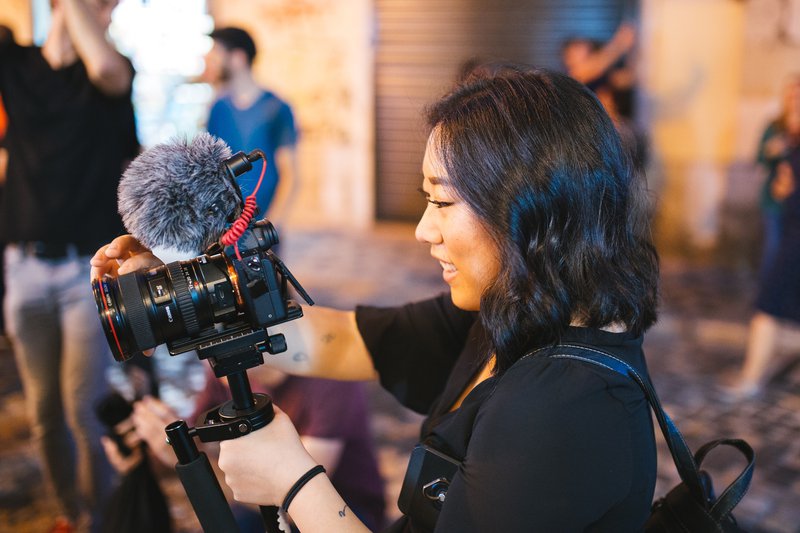8 Ways PR Strategies Will Change Post-Pandemic - from the desk of The Press Hook

The pandemic has caused major transformations in many industries, and public relations is no different. Here, Julia Buchmiller, CMO of The Press Hook - a new PR platform for startups, shares how PR strategies are adapting to the new normal.
At The Press Hook, we make it our priority to be at the forefront of trends. The pandemic has deemed 2020 a year of vast transformation across many industries — and public relations is no exception. While furloughs, layoffs and bankruptcies can put us all in a negative mindset, it’s important to remember that not all change is bad. And when we adapt our PR strategies to reflect current times, we will reap more success for our clients, and everyone will be better equipped to meet (or surpass!) their goals. It’s not impossible — it’s just different. And that’s okay!
To get a pulse on the energy and environment, I spoke with leading public relations executives and entrepreneurs about how they are assimilating. Here, they share their predictions and advice:

Podcast pitching is more important than ever.
You’ve heard about them, you know about them, and you probably listen to them — but are they part of your services for your clients? According to the president and founder of Trust Relations Agency April White, the number of podcast listens has increased by 42 percent since the pandemic started. Plus, countless ‘shows’ have launched, as people look for alternative ways to reach potential customers, build their brand, and remain relevant. White urges marketing professionals who don’t have podcast pitching as a central component of their PR strategies for clients to get going fast.
“While major news outlets continue to struggle financially and lay off reporters, other forms of media are growing,” she shares. “Publicists need to keep this in mind as they devise their action plan.” If you’re still not convinced, consider ‘The Joe Rogan Experience’ podcast, which receives an estimated 200 million monthly listens and views each month. As White lays it out, that’s four-times the reach of The New York Times.
Relationships with journalists should be prioritized.
Real talk: your public relations business is only as strong as your relationships with the media. After all, press release distribution only works when you have recipients eager to learn more and trust your agency. As the vice president of Green Room Patrick Gevas explains, in the era that’s void of tradeshow and in-person events, communication channels are becoming more crowded, making even email matter that much more. He suggests changing your PR strategies to include ways to connect with key journalists in their preferred format, whether that’s emailing, calling, video chats, or other mediums that work with their schedule.
And if you’re still building your roster of media contacts, The Press Hook makes it easier to discover who should be on your target list with our vast database of professionals. Journalists have more control of their profiles on The Press Hook compared to other channels, so you know exactly what works with pitching — and what misses the mark.

More experts will be asked to write bylined articles.
Newspapers, magazines and online outlets have gone through waves of layoffs, and their freelance budgets have been slashed. Though they have fewer people and less cash to work with, many are still expected to keep up consistent output of content. To meet these demands, White says many outlets are more open than ever to receiving articles from experts in various fields. To improve your chances of publication, White suggests including a closing line at the bottom of all appropriate pitches that offer a bylined article on the particular topic. And if you have the funds to support, having a few seasoned copywriters and ghostwriters on hand to meet the demand will help streamline your PR strategies, too.
Crisis communication is in demand.
Unfortunately, many businesses are facing a crisis right now. Even if you are a publicist or part of an agency who didn’t deal with this type of communication before, it’s time to add it to your offerings, stat. When navigating press release distribution covering negative news, knowing the right approach can save a client from a headache or media nightmare. “While not all agencies specialize in this area of PR expertise, as publicists, we all need to become more well-versed in it,” explains Nicole Zimmerman, the director of PR and communications for ATLARGE. “This is not to say that every client is going to have a crisis to manage, but it may be something as minimal as internal communications and shifting corporate messaging to reflect the new norm of operating during a pandemic. Ultimately, agencies and publicists will be looked at to help craft those messages and we need to be prepared to do so.”

PR strategies should include e-commerce initiatives.
In recent years, affiliate marketing has become a big player for many media brands. Rather than publishing a gift guide of random goods, many now focus on featuring websites that are part of their chosen affiliate program, resulting in a little more cash in their pockets. Though it makes sense, it can be difficult for budding entrepreneurs to get behind. After all, why would they put their products on a site that will cut their profits, when they can host it on their own website, and make the entire sale?
More than ever, publicists should focus on explaining the value of e-commerce goals and initiatives through the lens of new media, Gevas says. “With the explosion in affiliate marketing and global lockdown forcing businesses online in an incredibly short amount of time, it’s clear that will not be going away for the foreseeable future,” he continues. “The businesses that have either already had a strong online identity or figured it out quickly have been able to make pivots and PR teams have been able to identify relevant programs and influencers to facilitate coverage that is more likely to yield sales.”
Media events and engagements will continue to be virtual.
Press release distribution used to be a simple announcement to a wire with niche recipients. Today though, staying on a reporter’s radar and thus, having your clients included in coverage, means starting abreast with trends. One of the biggest ones right now is virtual events. Since journalists can’t mix-and-mingle in person, forward-thinking brands are coming up with creative ways to celebrate new product launches and other news. As Zimmerman puts it, all businesses are looking to technology to keep PR strategies moving along, whether it’s hospitality, restaurants, consumer products, or another sector. Since client goals still need to be met, she suggests pivoting budgets to include webinars, lunch and learns over Zooms, cooking classes, and so on.
And don’t forget to make social media part of the conversation, since it illustrates the success of these interactions to clients. “We need to lean heavily on social media to help share messaging. We are reliant on social media these days — almost to a fault — but it is important to take that reliance and shift it to the positive in order to share our client news in a tasteful and impactful way,” she adds.

PR strategies must align with the client’s values.
In the age of Black Lives Matter, #MeToo and other social justice movements, PR strategies will have to be more cognizant of a brand’s values, Gevas explains. The more sincere a brand is, how firmly they stick to their beliefs, and more importantly, how they communicate that to the public matters today. “It is critical for PR strategies to incorporate a brand’s genuine sentiments and in some cases, challenge other brands on social issues,” he continues. “Storytelling that incorporates these values and the action a brand takes will be more important as consumers are paying attention.”
The goal is to follow Ben & Jerry’s example. With a quick Google search, you’ll discover their response to BLM and defunding the police made headlines. Even if your clients aren’t quite as outspoken, they should have a value system that helps direct approach, language and strategy.
Publicists will need to adjust client expectations and goals.
Chances are slim 2020 will deliver what we thought (or hoped) it would. And while it can be a tough pill for clients to swallow, Zimmerman urges publicists to seek the forest beyond the teetering trees. By getting imaginative and strategic, you can help brainstorm solutions that meet new goals and aspirations. “In public relations, it is always about being creative and thinking outside the box to generate buzz for clients. We still need to be creative, and we still need to bring those big ideas to the table, but those big ideas just look a little differently now,” she explains. “It is a shift that we all need to embrace - our clients still need us, and adapting accordingly will allow us to be that go-to support and resource for them.”

Learn more about how The Press Hook works for brands here. Sign up here or get connected to the team (CMO: julia@thepresshook.com)
Check out the latest articles, tips, journalist interviews and industry insights on the ever-changing media landscape straight from The Press Hook team.


